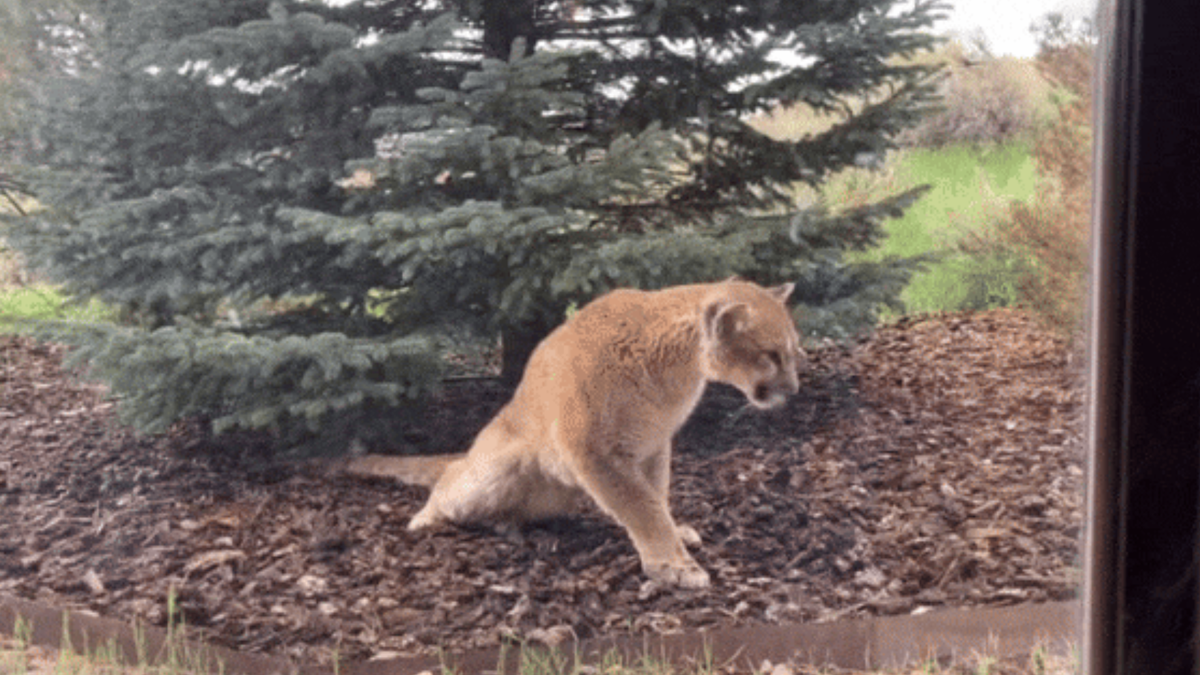The American Veterinary Medical Association said symptoms to watch for include a staggering gait, the inability to retract claws, extreme sensitivity to touch, tremors, and seizures. The illness usually lasts for a few days to a few weeks, but can also linger for more than a year.
A variant of the rustrela virus – related to the wider-known rubella virus which causes a skin rash in humans – called RusV was discovered in a female mountain lion in Douglas County, Colorado last year, according to a study published in the journal, Emerging Infectious Diseases, this month.
The big cat was observed in May 2023 with lesions on her skin and signs of severe muscle weakness in her hind legs. She was also reluctant to get up and had decreased mobility.
Alerted my folks and friends with cats. Unlikely to have spread to Canada in any meaningful numbers, but best to have the knowledge and see if that can be vaccinated against
Keeping them indoors will also dramatically reduce the chances of them getting it.
And it will also reduce the number of bird species being brought to extinction by outdoor cats. Now to be fair, most of that preying is going on by feral cats, but that’s why you should also spay or neuter in case kitty escapes.
Only humans are allowed to do that 💁♂️
Humans are doing that. Who do you think brought the cats there in the first place? Who do you think perpetuates the populations?
You missed the important part.
It generally results in a decline that require the animal to be euthanized.
I hope it doesn’t come to Japan. We have lots of cats running around the area that I moved to. I hope to start some trap+neuter/spay at some point, but can’t afford it now. One of the cats will get close and hang out, but will not be touched. They’re all varying shades of feral. On the plus side, they do help keep our rodent populations low (as do the snakes to a lesser degree (though they prefer toads), but I prefer non-venemous farm helpers
My first thought, luckily a virus and not a prion disease. Still sucks.
Can you explain the difference? I thought with viruses there is typically little to no treatment other than letting it run its course.
Prions are misfolded proteins that misfold other proteins they contact. They’re much harder to kill with heat or sanitizer and pretty much always fatal.
The Independent - News Source Context (Click to view Full Report)
Information for The Independent:
MBFC: Left-Center - Credibility: Medium - Factual Reporting: Mixed - United Kingdom
Wikipedia about this sourceSearch topics on Ground.News
https://www.independent.co.uk/news/science/cats-virus-disease-kill-america-b2600510.html
Very unpopular opinion: good. I love cats, but they are a pest when outside as they kill the local population.
If you have a cat, don’t let them outside of your property unless you hate ecosystems.
Even more unpopular opinion.
Sprawling suburbs are much more damaging to the ecosystem than cats.
Agreed. If you have a human, don’t let them build suburbs unless you hate ecosystems.
However, humans do observably seem to hate (or at least thoroughly ignore the needs of )ecosystems enough to ruin them, so I’m not sure enough people will listen.
…that’s a way more popular opinion lol
Only on left leaning places like lemmy
No. It is not more unpopular than disliking cats. Cats are a nonpartisan issue. For now.
It’s not an either/or thing. Outdoor cats are causing an ecological disaster when it comes to birds. The big solution is to spay and neuter as many as possible, especially pets. Even indoor ones can escape.
The added benefit is that when there are few enough cats that there are loving homes for most of them, then the percentage of kitties with humans to take care of them increases drastically.
Then support your local trap/spay/neuter charities. This is a miserable and painful way for them to die and likely wouldn’t kill enough of them to get the effect you’re hoping for. All you’re wishing for here is needless suffering.
I am aware of how damaging cats are to the ecosystem, but regardless of that, I don’t understand how you can live every day worrying whether the cat will come back or bring some kind of disease home with it. With our indoor cats I have control over what they eat and at most every few years they catch a cold. But nothing serious after 9 years of having indoor cats.
I hope this comment wont be in a netflix documentary about a killer
I’ll make sure to mention you when I talk to the FBI
deleted by creator






